Kanadukathan is a tiny little village, a few kilometres outside Karaikudi, in the heart of the Chettinad region. The small dusty lanes are fairly deserted and in the time that we walked around the village we encountered maybe 15 people. Most on foot, a few on bicycles and bikes. In the distance we heard a train pass by once. But the red dust and eerie silence is quietly watched over by some of the largest, most beautiful, stately mansions one has ever seen. They fill this village, and all the others in the region, reminiscent of a bygone era, when the rich and enterprising Chettiar community, financiers of the royals, lived like kings. The smallest of these mansions will typically occupy an entire block, from one street to the next, have no less than 50 or 60 rooms, entrance halls that any wedding planner would lust for, art to fill a museum, and solid teak and gold that could probably purchase a small nation. Most of these homes, that have entertained royalty and their ilk, have now fallen to ruin, and are large forgotten stories that accompany you as you walk around the village.
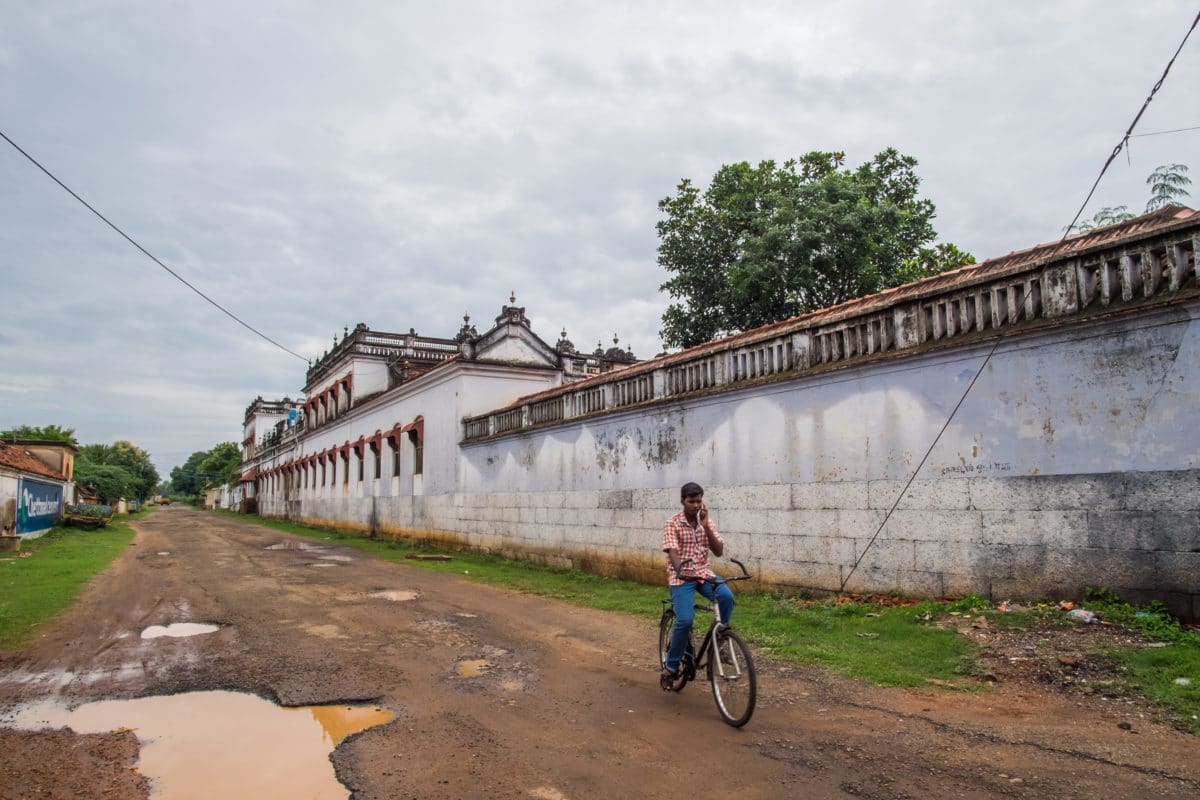
Fortunately, for the travellers, historians or simply the nosey, many of these stunning homes have now opened their doors to the public, either as a heritage homestay or as museums. We stayed at one such homestay, at the grand Chettinad Mansion, as guests of the spritely and enterprising octogenarian, Mr Chandramouli.
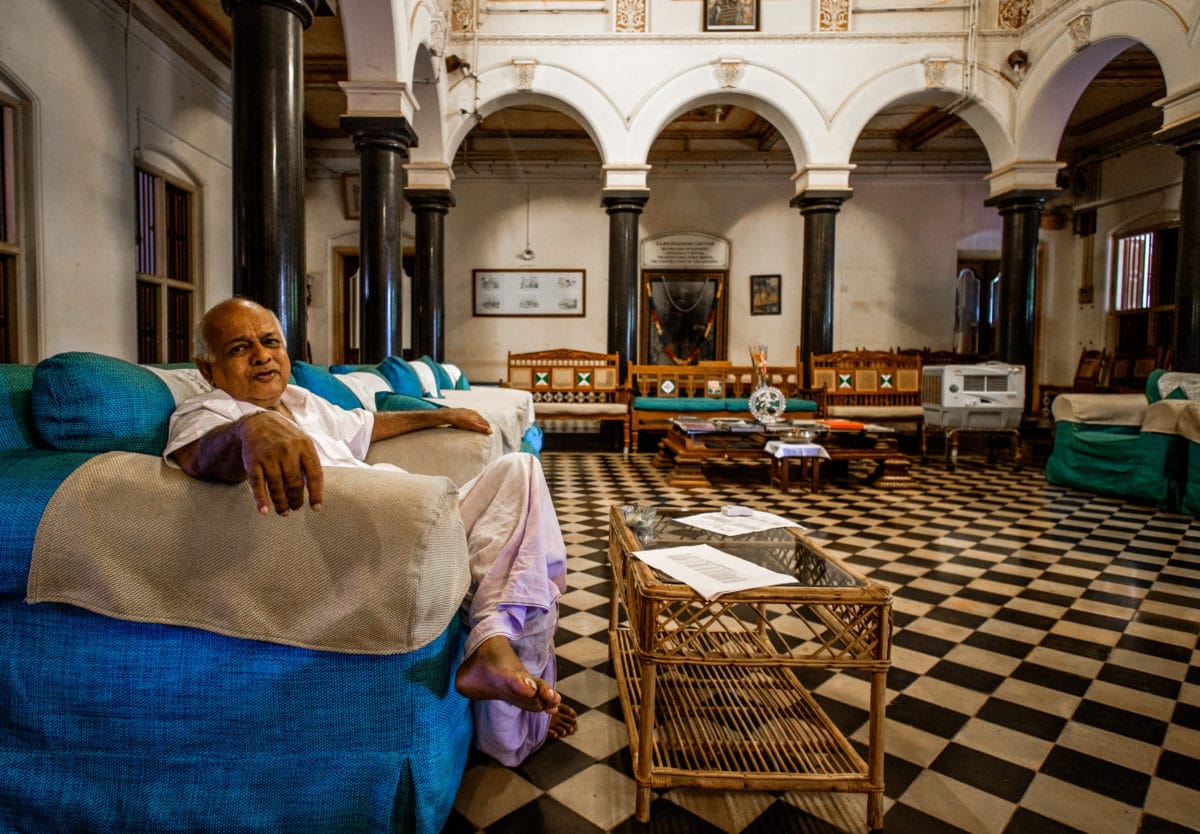
Built in 1902 by Mr Chandramouli’s grandfather, the mansion is nothing short of magnificent. The house, which spans 42,000 square feet, was built with granite from Spain, marble from Italy, teak from Burma, cast iron from the UK, and stone and tiles from the famous Athanagudi tile factories. It is truly an international house, the patriarch of the family proudly tells us. Sitting in the entrance hall in his usual attire of a crisp white shirt and cotton dhoti, he narrates the legend of his community and how they rose to power and respect during the Chola Empire and later during the Pandya Empire. As you sit and listen to his soft voice and the fascinating story of his ancestors, known for their business acumen and honesty, you are slightly distracted by the intricately carved ceiling above you and the cool marble floor beneath your feet. The front of his house, similar to all other homes, has a colourful statue of Lakshmi, the Hindu goddess of wealth; she has blessed them and they believe they owe their business acumen and thanks to her. The house has been preserved with all its original trappings, and you can imagine the large family that would have occupied the 126 rooms and 4 inner courtyards.
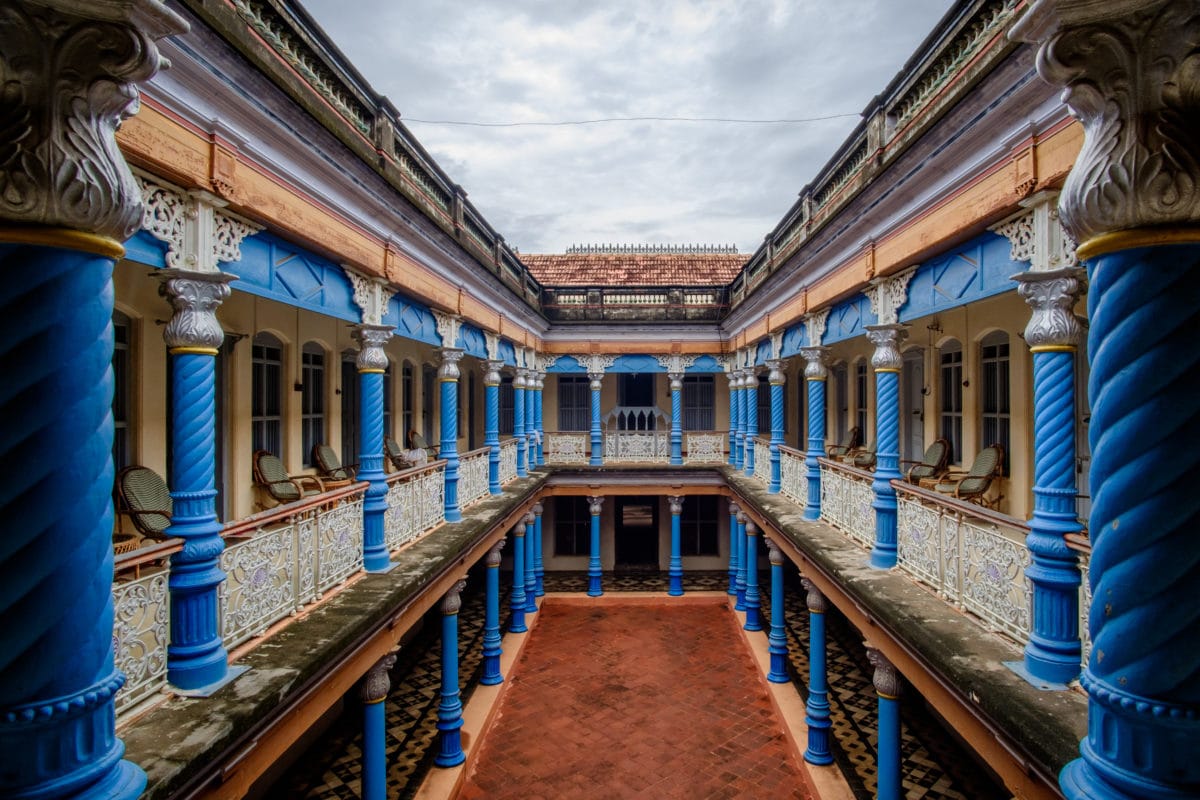
The house, you learn from Mr Chandramouli, is fairly typical of the Chettiar style, where the bedrooms are small but the common spaces are large, to foster a sense of integrated living, as he says. During his youth, the family would spend most of their time in the central courtyard, which is beautifully adorned with blue cast iron pillars, delicate carvings, and a smooth red mud floor. After having spent decades of his life working and living elsewhere, he has now retired in his village of Kanadukathan, and spends his time running a homestay and indulging inquisitive travellers such as ourselves. On either side of the large hall, where you have now sat for hours chatting with your host, hang massive portraits of his late father and grandfather, who watch over the house, their family and the guests who come to enjoy a slice of the famous Chettiar hospitality and spicy cuisine.
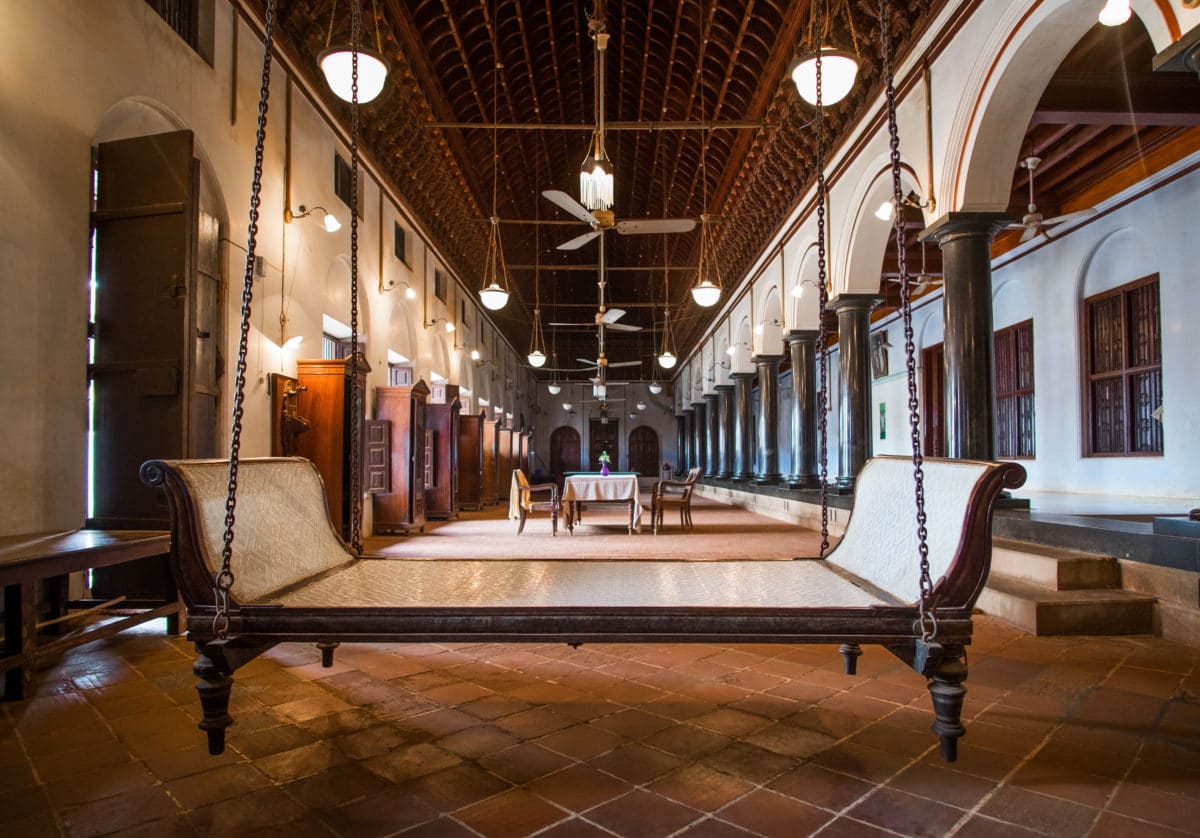
A few blocks from the house, is another hundred year old mansion, the CVRM house, which is now partly a museum. For a modest fee of Rs. 50, the old caretaker gives you a grand tour with great pride. The entrance or reception hall is in a slightly different style, with two old fashioned swings at either end and a row of sturdy wooden cupboards, that have firmly kept the families secrets for three generations. You are free to wander the front of the house and enjoy the antique furniture and carpets, which is all kept shiny and clean by the caretaker. The back of the house is still used by the family.
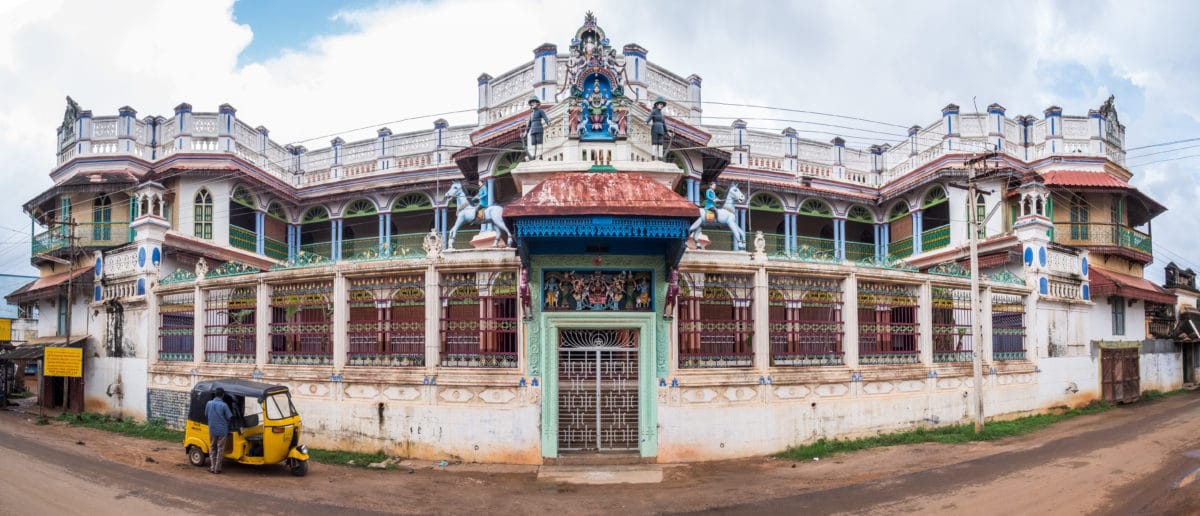
A few miles away is the even tinier village of Athangudi, which is famous for producing the tiles used in all the Chettiar homes. Here the fabulous ‘Big House’ has been made infamous by the movie industry and is worth a visit. As in any of these homes and mansions, one must always remember to look up as you enter, for the ceilings are almost always carved with great detail or beautifully painted. The ceiling in the big house is nothing short of mesmerising, and you have to take a moment to sit down lean back to adequately enjoy and appreciate the art. The CVRM mansion ceiling is another wonder, for it is different from the rest – ornate and completely wooden, made of teak brought from Burma. An antique dealer had once purportedly offered the owners 26 lakhs for the ceiling in the early 1990s.

Though the glorious ceiling in the CVRM house has survived as have a few others, the community has a whole has fallen on hard time since the 1950s and have struggled to recover.
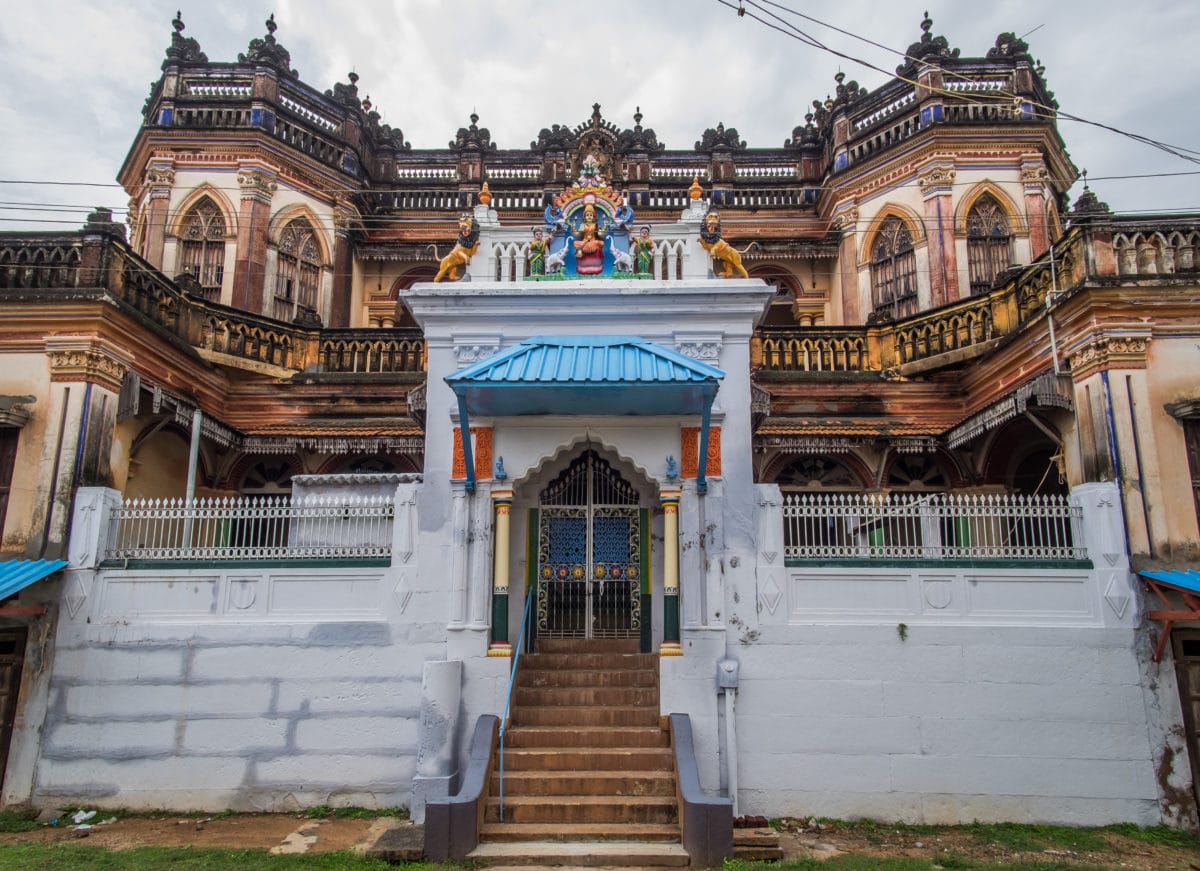
Today in Karaikudi’s old antique market, pieces of Chettiar history are bought and sold. Many magnificent carved doors, stunning granite and teak wood pillars, and pieces of jewellery have found their way to these markets, as the community proudly struggles to maintain their palatial homes and survive in a world that has changed.
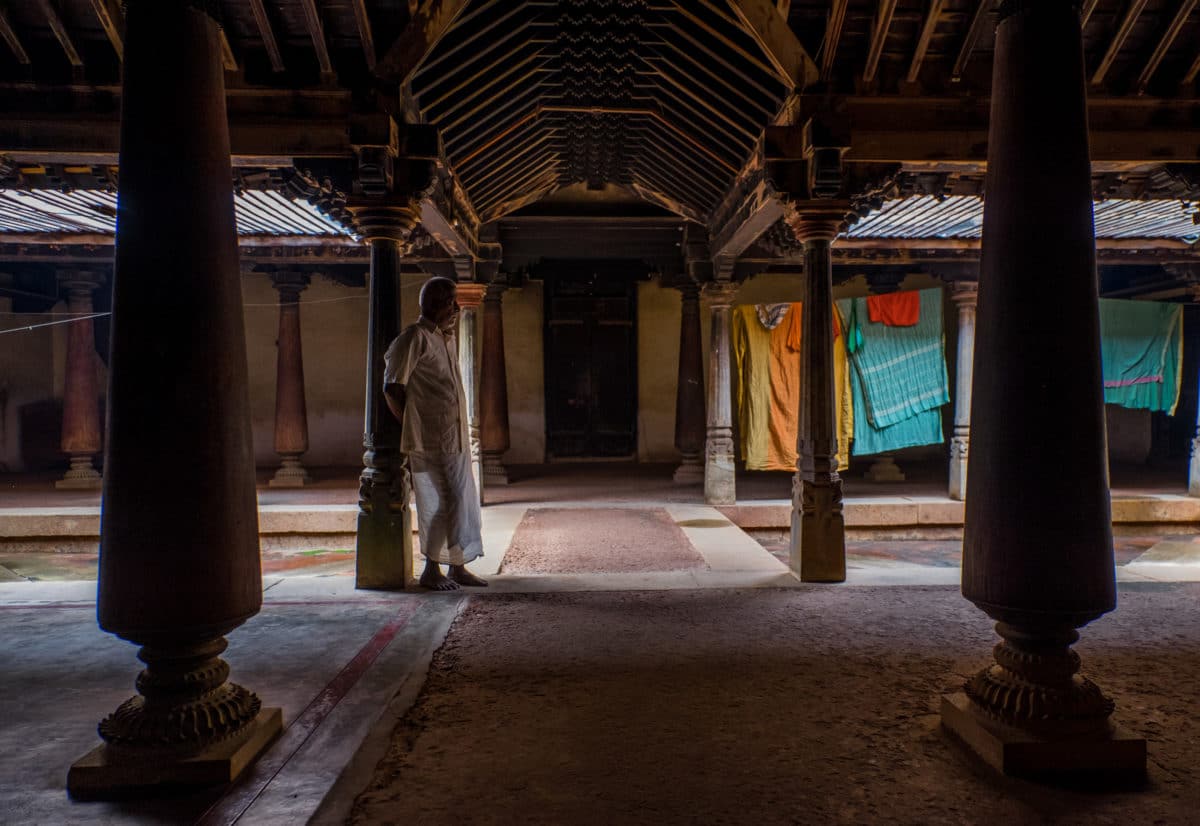
There is much to be said about these mansions, but in this case we will let the pictures speak to you and tell you their story. A visit to this region, to take in a bygone era that is slowly reviving, and understand the history of a community that has shaped India, is a must.

Some Useful Information:
How to get there: Chennai is the closest major city with an International airport to Karaikudi and is well connected by train. Its also drivable from Madurai, Trichy, Tuticorin and Coimbatore (a bit far). Tuticorin is the closest domestic airport. From Karaikudi, Kanadukathan is about 15 kms away and you can get a local bus or an auto. If you are staying at the Chettinad Mansion they will arrange for transport if needed.
Where to Stay: Though we highly recommend staying at the Chettinadu Mansion for the full Chettiar experience at a resonable cost, there are also other options in the area like the chic and upscale Vilsalam run by CGH earth. You can also base yourself in Karaikudi, which has a number of decent midrange optons and drive down to check out the mansions in Kandukathan and other villages in the region.
How to get around: If you are based in Kanadukathan you can and must explore the village on foot. If you are based in Karaikudi you can probabaly book an auto or a car to take you around Kanadukathan, Athangudi and other villages. A day tour to Karaikudi and Athangudi should cost you around Rs. 500 by auto
Dont miss: Most of the mansions are private residences which are closed, but there are a few like the CVRM House and VVR House in Kanadukathan and the Athangudi Palace in Athangudi where the caretakers will allow you in and show you around the house for the princely sum of Rs 100/-. The Chettinad Palace in Kanadukathan is now closed to tourists, but you can try your luck with the caretakers! Athangudi also has the lovely handmade tile factories where you can walk in and see how the colourful tiles are made. Another must-do is the antique market in Karaikudi for some beautiful old furniture, solid carved wooden and granite pillars and artifacts from the old houses.
Enjoyed it and would love to visit these places.
Hi Guys,
I made a trip to Chettinad keeping your article as my reference point earlier last year. Its quite possibly one of India’s best kept secrets and a magnificent place to learn and appreciate the grandeur of a bygone era & the contribution to the Indian Banking by the entrepreneurial Chettiar community.
The scores of antique shops at Karaikudi where quite revealing and i will most likely visit that place once again to pick up some stuff for my home. Whilst at Karaikudi, I would like to recommend the food at Bangla which serves one of best authentic Chettinad fares.
Thank you as always for the great quality and highly detailed write ups,
Angela & Rohit
Hi Angela, glad you enjoyed Chettinad, it’s one of our favourite places too!
So unfortunate that I stumbled upon this write up after my trip to Chettinad. You made me feel like I missed out on so many things and hey I’ve been there at the same time… A brilliantly written article… Cheers!!
Haha thanks!, make sure you come back to the blog more often so that you don’t miss out on stuff 😉
Amazing photos….
Woah..thank you for sharing. That has been truly an amazing article 🙂 Beautifuly written and such an off the beaten path topic.
The blogging world needs more of this and less “5 packing tips for female solo backpackers to chiang main” 🙂
i am long in planing a trip to india and its surounding countries and I think sleeping in a chettiar is very much on top of it now 😀
Thanks Norman, yep we do like writing about places that we love. Glad you enjoyed it and thanks for acknowledging our blogging style, we do appreciate it 🙂
Amazing photo essay, the article on the Chettiars is simply outstanding , kudos to you and your spouse. I am reading the rest of the blogs now and thoroughly enjoying .
Thank you Manish, hope you enjoyed reading the other stories, if you liked them you could follow the blog so you get regular updates.